

Speyside Whisky festival and tour in the North-East of Scotland 26th Sept- 02 Oct. 2007
Speyside and Highlands tour 2007
Part 1, 2, 3, photo gallery
Part 1:
Between the 26th of September and the 2nd of October , I drove almost 1000 miles through the North-East of Scotland and visited several distilleries on my way, as well as attended the Speyside Autumn whisky festival for the second year in a row.
After the whisky-live in Paris (see my report for this event here), and having tasted the end product, it was time to visit where and how this lovely whisky was produced.
My first visit was to the Invergordon grain distillery. This was my first visit to a grain distillery and I was not disappointed at all by what there was to see. Unfortunately, since I was not allowed to take photographs, you will have to rely on my written rendering of this very interesting visit with Ian Mackay. As you can see on the photograph taken from the gate, the distillery itself (the first building on the right) is surprisingly complex for a distillery producing 35 mio litres of pure alcohol (LPA) per year. With such a capacity, only Loch Lomond is smaller. By comparison, Cameronbridge will be able to produce 100 mio LPA once the upgrade has been completed. The process in a malt and a grain distillery is quite similar. Although wheat is used, it is necessary to add about 8% of barley for the conversion of sugar (starch) into alcohol. The second difference is that the wheat needs to be cooked in order to facilitate the liberation of the starch before mashing. At Invergordon, the wheat is cooked at 143°C for 30 min. The sight of the 23 wash backs was quite impressive; with each wash back having a capacity of 220,000 to 300,000 litres! Concerning the rectifier and analyzer, do not expect to see any spaceship technology: just two long metallic tubes. In the analyzer, the alcohol is evaporated and in the second one, the alcohol is condensed and collected. Of interest, the yield of a grain distillery is slightly lower than from a malt distillery, but the coffey stills allow continuous distillation, thus allowing a higher output. Inside the grain distillery, included in the same building, is a dark grain plant, allowing the conversion of the by-products into pellets sold as cattle food. Although the distillery in itself is small, the whole plant is over 25 acres and includes many palletised warehouses to store the 1000 casks filled every day, as well as the cooperage. As of this year, all the capacity is used for the production of grain whisky and gin and vodka are not produced anymore. This visit was extremely interesting and instructive and I wish to thank Richard Patterson and Ian Mackay of Whyte & Mackay for granting me the privilege to visit this distillery.
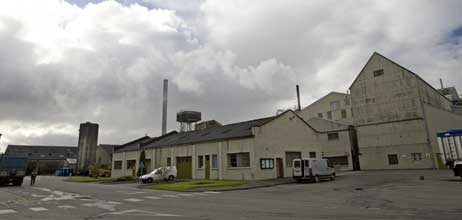 |
| The Invergordon Grain distillery. |
On my second day, my first visit was at the Dalwhinnie distillery. The night before was rather cold and when I arrived now could be seen on the top of the mountains surrounding the distillery. The view when arriving to the distillery was beautiful, as well as the distillery itself. Since they have increased from 5 working days a week to 7 days a week, the production has now increased to 1.5 mio LPA. The floor malting operations were stopped in 1968. The cuts for the spirits are quite low, since they start to collect the heart of the run from about 67% until 56%, which should be one of the lowest values for the whole whisky industry. On site, they have the capacity of storing between 5 to 7000 casks, which are filled in the Dufftown-Rothes area.
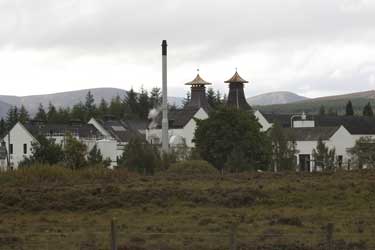 |
| Dalwhinnie distillery |
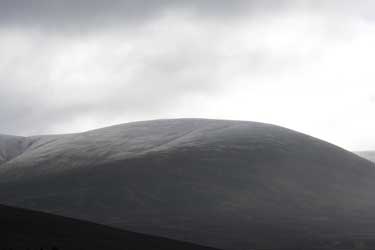 |
| and the surrounding moutains with a white coat |
On my way to the Elgin, I stopped at Balmenach. Balmenach was mothballed in 1992 by UDV (former Diageo) before being sold to Inverhouse in 1997. When Inverhouse took over the distillery, the warehouses were empty, therefore only a few official bottlings have been released. The Balmenach decanter for the Golden Jubilee was produced by casks (1 cask ?) bought back. From the outside, Balmenach seems like an old abandoned distillery, with the former distillery manager house emptied and covered with wooden panels. But from the inside, this is an another story: everything is freshly painted, equipment is in an excellent condition, with a semi-lauter mash tun installed since last year and everything is shining (as you can see on the photographs). The production is also quite impressive with 2.7 mio LPA. Balmenach is one of the few distillery still equipped with worm tubes. I wish to thank Simon Buley for guiding me through this beautiful distillery and I hope that we will soon be able to taste some Balmenach whisky!
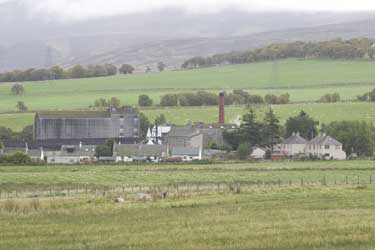 |
| The Balmenach distillery from the outside |
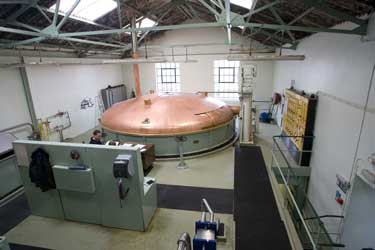 |
| and from the inside. |
And finally, I had an appointment at Miltonduff distillery. Mitlonduff is the workhorse of Chivas and the production headquarters for the group. With a production of about 5 mio LPA, Mitlonduff is one the biggest distilleries in Scotland. All the production of the distillery goes into blend, with some of the casks finding their way to independent bottlers. I have not tried the young Miltonduff so far, but the Miltonduff 1963 from Gordon & Macphail is excellent and the Miltonduff 1964 42 YO from Signatory a pure beauty. Miltonduff used to be notorious for its Lomond stills installed in 1964 and removed in 1981. The Lomond stills have now been replaced by normal stills and the spirit produced by the Lomond stills was known under the name Mosstowie. The production is running with only 1 man per shift! When I was there, the two operators were very kind to me and ready to answer my questions. I wish to thank Alan Winchester and Caroline Mitchell from Chivas for allowing the visit to the distillery.
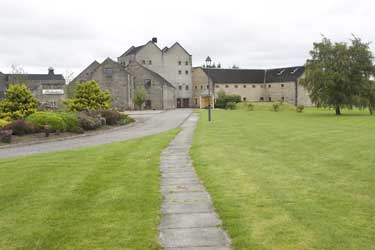 |
| Mitlonduff distillery, production headquarters of Chivas seen from the outside |
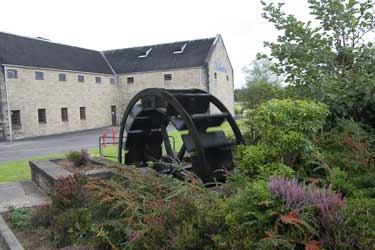 |
| with its water mill |
!www.whisky-news.com ©09 October 2007